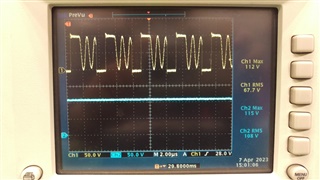Other Parts Discussed in Thread: PMP20497, TPS23754
Hi Sir,
The power board function is 54 V transfer to 12V output voltage.
There have 5pcs PCBA that can't generate 12V output normally. After analysis , the LM5022 is broke such it can't generate 12V output.
Rework new LM5022 , they can generate 12output normally.
The transformer part number is RM6-136 an mosfet part number is MTE65N20H8.
Attached is the test result , please help to confirm whether the waveform for Vin, Vcc of LM5022 and Vds of mosfet are normally or not
thanks


